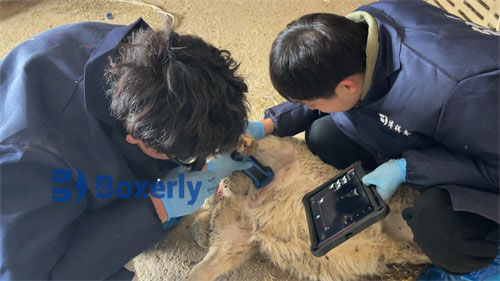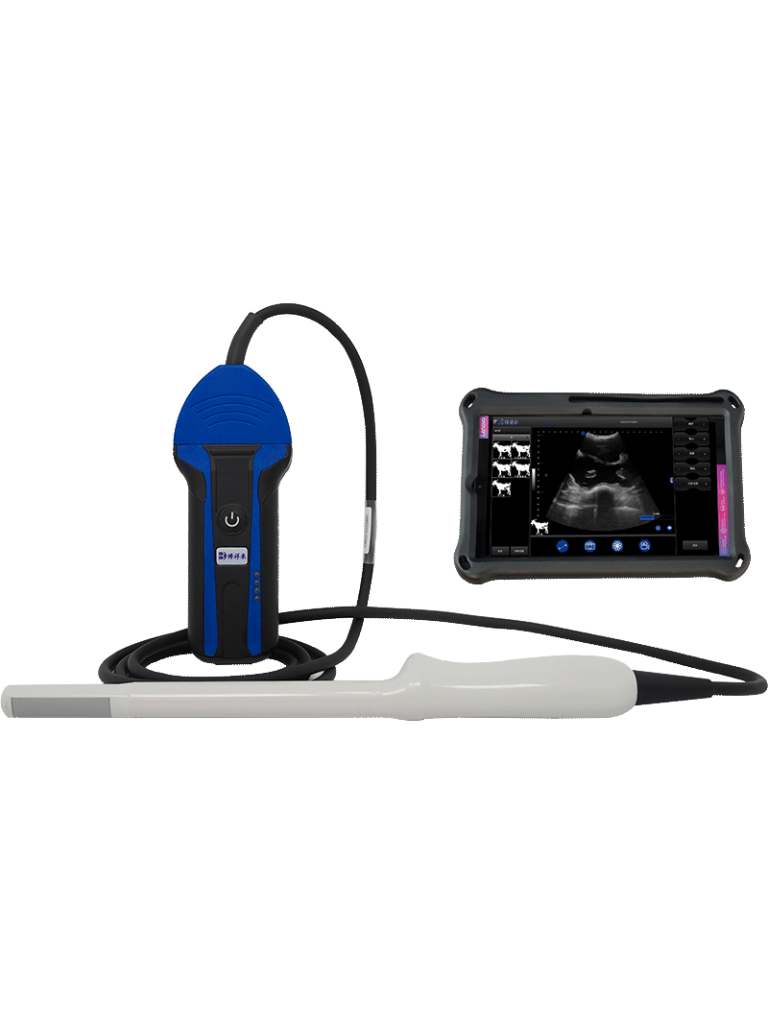Sheep Lung Fluid Detection with Portable Ultrasound at Farms
If you raise sheep, you probably know how challenging it can be to spot early signs of respiratory illness before it turns serious. Sheep are pretty good at hiding symptoms, and by the time they show obvious coughing or difficulty breathing, the infection might already be deep inside their lungs. That’s where portable ultrasound steps in as a game-changer on modern farms, helping farmers and vets catch lung fluid accumulation early and improve animal welfare.

Why Lung Fluid Matters in Sheep
Lung fluid, often caused by pneumonia or other respiratory infections, is a huge concern in sheep farming worldwide. It leads to reduced growth rates, lower wool quality, decreased fertility, and in worst cases, death. Respiratory diseases are among the most common health problems in sheep flocks, and prompt detection is critical to prevent outbreaks.
Traditionally, diagnosis has relied on observing clinical signs like nasal discharge, coughing, lethargy, and rapid breathing. However, these signs can be vague or only appear once the disease is well advanced. Physical examination alone sometimes falls short, especially in large flocks or extensive grazing systems where close monitoring is tough.
Enter Portable Ultrasound: A Practical Tool on the Farm
Portable ultrasound machines have become increasingly affordable, rugged, and easy to use. This technology was first popularized in cattle and horses, but its value in small ruminants like sheep is rapidly gaining recognition. Ultrasound lets you look beyond the skin and detect abnormalities inside the chest — especially fluid in or around the lungs — without invasive procedures.
What makes ultrasound particularly suited for farm use is its non-invasive nature, real-time imaging, and quick results. You don’t need expensive lab tests or complicated procedures. A trained farmer or vet can carry a compact device right to the pen or pasture and scan the sheep in minutes.
How Does Lung Ultrasound Work in Sheep?
Sheep lungs normally appear on ultrasound as bright, reverberating lines caused by air inside the lung tissue. This “artifact” pattern means healthy lungs are full of air and don’t conduct ultrasound waves well.
When fluid accumulates — whether it’s in the lung tissue (interstitial or alveolar fluid) or in the pleural space (pleural effusion) — these ultrasound artifacts change. Fluid transmits ultrasound much better, so the machine shows hypoechoic (darker) or hyperechoic (brighter) regions, indicating abnormalities.
In practice, the technician places the ultrasound probe on the shaved or wet skin over the thorax and slowly moves it along the ribs. They look for signs like:
-
B-lines: vertical lines extending downwards from the lung surface, indicating interstitial fluid or pneumonia.
-
Consolidation: areas where lung tissue looks solid (like liver), signaling severe infection.
-
Pleural thickening or effusion: fluid in the pleural cavity causing abnormal lung sliding or visible pockets.
Interpreting these patterns requires some training, but the learning curve is not steep. Many vets and progressive farmers have become confident lung scanners after a few sessions.
Why Is Portable Ultrasound Better than Traditional Methods?
The advantages go well beyond convenience.
-
Early Detection: Ultrasound identifies lung fluid before clinical signs become obvious. Catching pneumonia early allows timely treatment, reducing mortality and long-term damage.
-
Objective Monitoring: Instead of guessing severity from symptoms alone, ultrasound provides visual proof and measurable changes. This supports better treatment decisions.
-
Avoiding Unnecessary Antibiotics: Respiratory symptoms don’t always mean bacterial infection. Ultrasound helps confirm pneumonia presence or absence, preventing overuse of antibiotics and supporting antimicrobial stewardship.
-
Cost-Effectiveness: While there’s an upfront investment, portable ultrasound can save money by reducing losses, improving treatment success, and optimizing herd health management.
-
Welfare Improvement: Quicker diagnosis means less suffering and faster recovery.
A Typical Scenario on a Sheep Farm
Imagine a sheep farmer in New Zealand with a flock of 300 ewes. A few lambs are off their feed and look a bit dull but don’t cough much. The farmer uses a portable ultrasound unit to scan their lungs. The images reveal subtle B-lines and early consolidation patches that confirm pneumonia onset.
Thanks to this info, the farmer treats only the affected lambs with appropriate antibiotics and supportive care, rather than medicating the whole group blindly. Follow-up scans a week later show the fluid has cleared and the lambs are thriving again.
Farmers like this report improved confidence in disease management, less guesswork, and better outcomes overall.
Challenges and Tips for Ultrasound Use in Sheep
Like any tool, ultrasound is not a magic bullet and has limitations.
-
Training Required: Learning to recognize normal versus abnormal lung patterns is key. Participating in hands-on workshops or working with a vet helps.
-
Animal Handling: Sheep can be jumpy, so gentle restraint is necessary for good image quality.
-
Equipment Care: Portable units need protection from dirt, moisture, and drops on the farm.
-
Interpreting Complex Cases: Ultrasound findings should be combined with clinical exam and history for accurate diagnosis.
-
Costs: Though prices have come down, initial costs might be a barrier for some smallholders.
What Foreign Experts Say About This Technology
In countries with large sheep industries like Australia, New Zealand, the UK, and parts of Europe, portable lung ultrasound is gaining ground as a practical solution for pneumonia management. Veterinary schools increasingly include thoracic ultrasonography in their training. Many research studies highlight its high sensitivity and specificity for detecting lung lesions.
Experts emphasize that combining ultrasound with clinical assessment forms a powerful approach to improving flock health. Some even suggest incorporating routine lung scans into lambing or weaning protocols to catch hidden infections.
Future Directions and Innovations
As technology evolves, we can expect more user-friendly devices with enhanced imaging, automated lesion detection, and integration with herd health software. Remote consultation via telemedicine might allow farmers to send ultrasound images to vets for instant advice.
Moreover, research into lung ultrasound scoring systems and standard protocols for sheep will make interpretation easier and data more comparable between farms.
Final Thoughts
Portable ultrasound has transformed how we detect and manage lung fluid in sheep. It’s a tool that helps farmers stay ahead of respiratory disease, protect their investment, and improve animal welfare.
If you haven’t tried it yet, it’s worth considering. With a bit of training, patience, and investment, ultrasound can become an indispensable part of your flock health toolkit.





